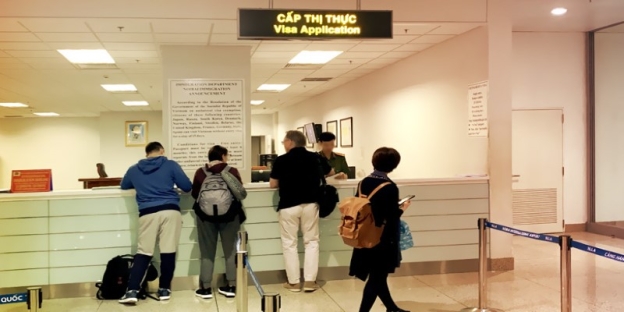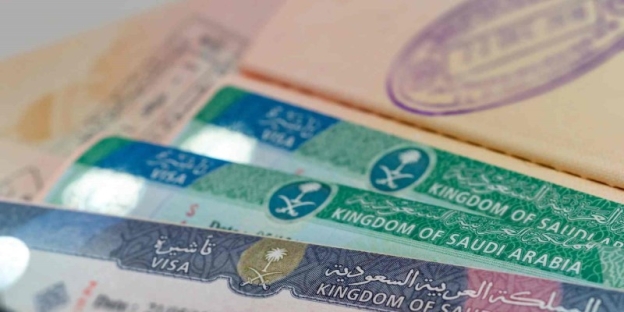Finance
Tax Savings Preparation Tips for 2025
1757926296000
Is your passport ready, but you're unsure what type of visa you need? Missing one document can turn your dream trip into a cancelled flight. Here's what to know about travel visa requirements before you go.
Is your passport ready, but you're unsure what type of visa you need? Missing one document can turn your dream trip into a cancelled flight. Here's what to know about travel visa requirements before you go.
One of the most confusing aspects of international travel is determining the paperwork required by each country. Travel visa requirements vary not only by country but also by your nationality, the purpose of your visit, and the duration of your stay. There's no universal rulebook. A tourist from Japan may be able to walk straight into Italy without any paperwork, while a traveller from India may need a pre-approved Schengen visa weeks in advance. Even if you've been somewhere before, the rules might have changed since your last visit.
Many travellers wrongly assume that a visa is just an arrival stamp. That may be true for some destinations, but others demand online applications, printed confirmations, or even in-person embassy visits. You may be asked to provide bank statements, hotel bookings, and proof of travel insurance. The earlier you find this out, the better.
Don't rely on secondhand advice. Always check official government sources or the embassy websites. Travel visa requirements can change with little notice—sometimes for political reasons, and at other times for public health reasons. If your destination has a complicated application process, you'll be glad you started early.

There's no universal checklist, but certain documents show up in almost every application. Having these prepared will save time and Stress:
Some countries may require biometrics or request a personal appearance at the embassy or consulate. Others may need an official invitation or proof of prior travel history.
If your trip involves multiple countries, such as travelling through Europe's Schengen zone, you'll need to apply based on your primary destination or the country where you will spend the longest stay. Misapplying here can lead to rejection or problems at border control.
The keyword here is clarity. Ensure that everything matches, including your name, travel dates, hotel bookings, and passport details. Any mismatch can raise flags.
Let's break this down. You'll often hear about three types of visas: e-visas, visa-on-arrival visas, and embassy/consulate-issued visas. Each one functions differently, and knowing which one applies to you can save you significant headaches.
An e-visa is applied for online before your trip. You submit your documents digitally, pay the fee, and receive an electronic approval, which is usually emailed to you. Countries such as Turkey, India, Kenya, and Sri Lanka offer e-visas to many nationalities. They're faster than embassy visas but still require preparation.
A visa on arrival means you don't need to apply ahead of time, but instead obtain the visa at the airport or land border. Thailand, the Maldives, and Jordan are known for offering this option; however, even these countries often require pre-registration or documentation. Showing up empty-handed doesn't always work.
Embassy or consulate visas are the most traditional and the most formal. You'll usually need to schedule an appointment, fill out detailed forms, and possibly attend an interview. Schengen countries, China, Russia, and the U.S. typically require this route. These applications take the most time and scrutiny.
Before planning, check which category your destination falls under. You can’t assume based on region or continent. For example, Southeast Asia has a mix of visa-free entries, e-visas, and embassy-only permits depending on your passport.
It's easy to overlook small things when you're focused on flights, hotels, and packing. But skipping a visa detail can lead to being denied boarding or refused at immigration. Here are a few common mistakes travellers make:
Another big one: applying too late. Even e-visas can take up to 5–7 days in some countries. Embassy visas may take two weeks or more. If your passport is about to expire, renew it before it expires. Many countries won't accept a passport that's set to expire within six months of entry.
If you're lucky enough to hold a passport that allows visa-free entry to certain countries, don't get too relaxed. You still need to check entry conditions. Some destinations have specific health requirements, electronic travel authorisations (such as ESTA for the U.S. or eTA for Canada), or arrival card rules.
Visa-free doesn’t mean document-free. You may still need proof of funds, return tickets, or accommodation details. Immigration officers have the right to deny entry if they’re not satisfied, even if you technically don’t need a visa.
Travel visa requirements may seem less stringent for visa-free destinations, but it's wiser to treat them with the same seriousness. Always carry printed or digital proof of all bookings. Have your hotel address and emergency contact info handy, especially if you're entering from a non-direct flight.
Some places are simply harder to access, whether due to political, economic, or historical reasons. If you're planning a trip to any of the following, expect more paperwork and patience:
Known for its long forms and invitation requirements.
Embassy-only visas with fingerprinting and a detailed itinerary.
Often needs a sponsor or guide, especially for U.S., UK, and Canadian citizens.
Now offers e-visas, but the rules are still subject to regular changes.

For many nationalities, the visa application process typically involves a personal interview and the submission of supporting documents.
The common thread? Start early, double-check everything, and prepare for extra steps. Don’t assume that just because a friend visited easily last year, you’ll have the same experience.
This is where things get tricky. Overstaying your visa—even by a single day—can result in fines, bans, or even worse consequences. Some countries are strict, others less so, but it's never worth testing the line.
In places like the Schengen zone, overstaying can lead to being barred from re-entry for months or years. In Southeast Asia, you might be fined at the airport. In stricter countries, you might face legal proceedings or be blocked entirely.
If your plans change and you need more time, consider exploring legal options for extending your visa or switching to a different visa type. Don't wait until the last day. Some extensions require approval in advance.
And never assume that leaving the country for a day and returning resets your visa. Many nations monitor these border-hopping patterns and may deny re-entry to individuals who engage in them.
The keyword—travel visa requirements—isn’t just a formality. It can make or break your trip. Whether you’re jetting off for a holiday, attending a business event, or exploring multiple countries on a longer journey, knowing what documents to carry is non-negotiable.
The rules can vary significantly, even between neighbouring countries. One place may offer a warm welcome with minimal red tape, while the next demands a thick folder of paperwork. That's the world of visas.
So check early, check often, and double-check everything before you fly. The peace of mind at the border is worth every minute spent preparing.
Travelling without knowing the visa rules is like boarding a plane without knowing the destination. Some travellers only realise they need a visa when they're denied boarding at the gate. By understanding travel visa requirements ahead of time—right from the type of visa to the exact paperwork—you not only avoid Stress but ensure your journey starts smoothly. Whether you're headed to Japan, Germany, or Brazil, one thing stays constant: preparation is your best passport.
tech
1756805633000
Education
1756805403000
Finance
1758253048000
finance
1757665453000



